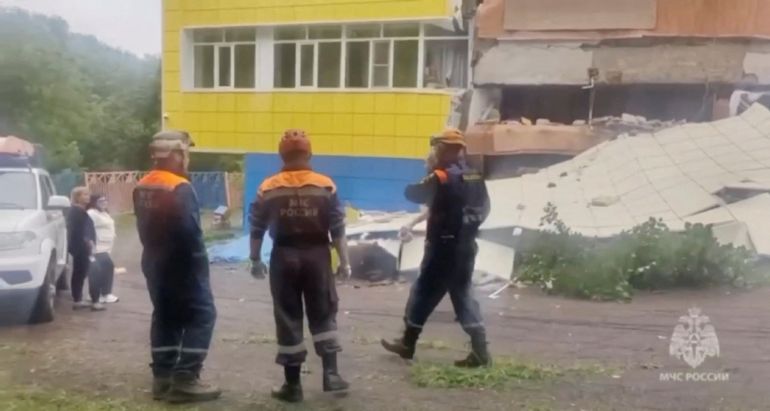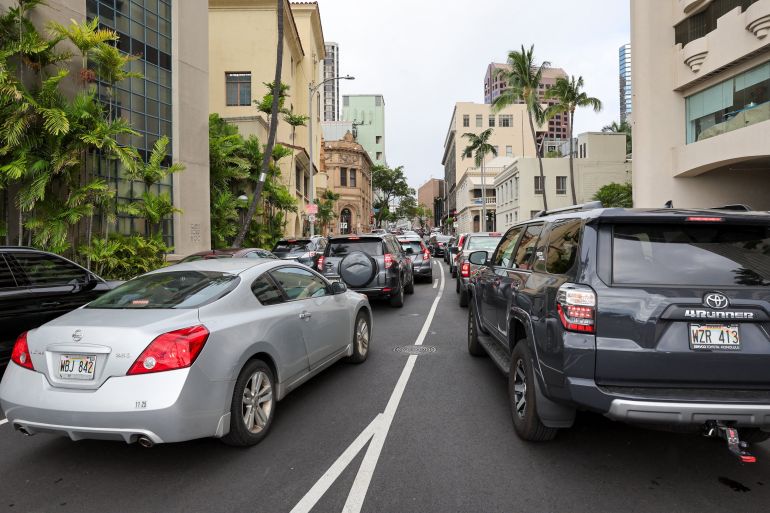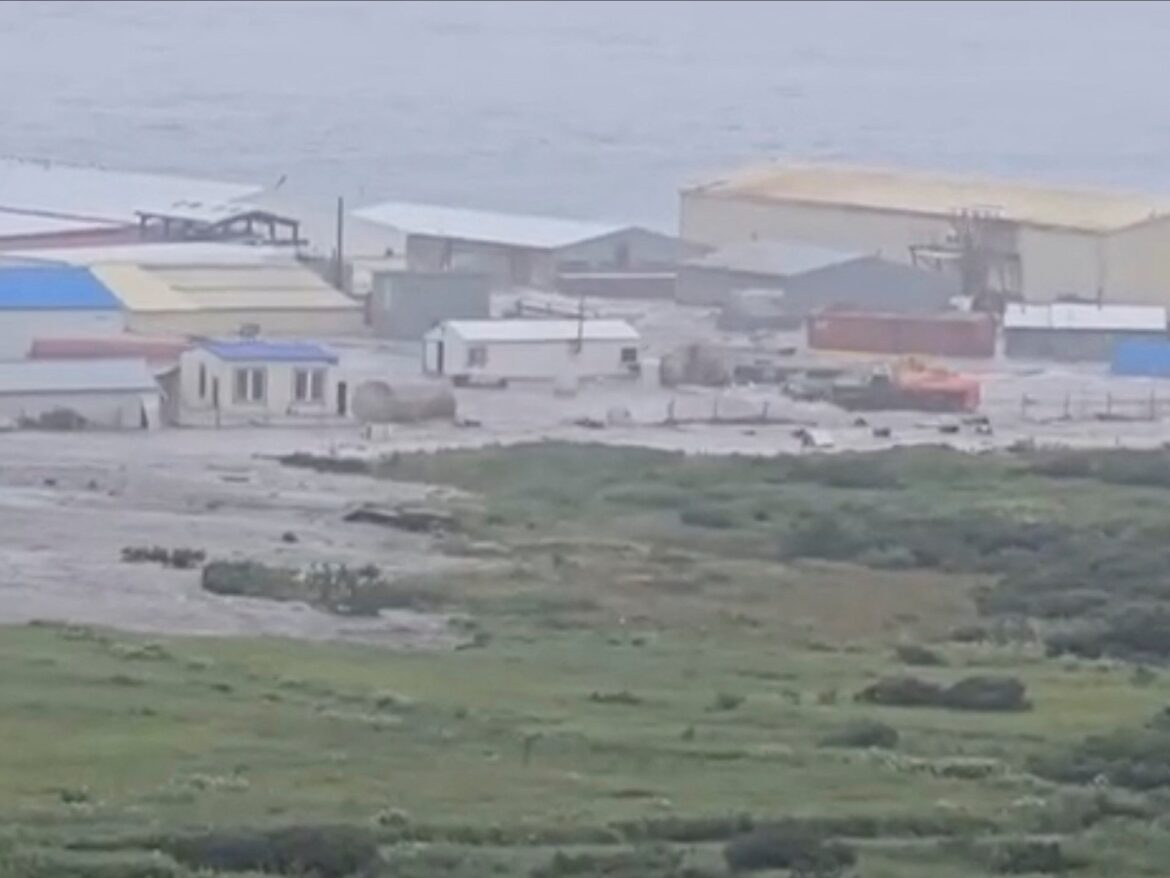Tsunami waves have hit parts of Russia, Japan and the United States after a massive earthquake off the Russian coast, with alerts issued for dozens of other countries, including the Philippines and Ecuador.
Potentially hazardous waves were expected across Latin America and numerous Asian and Pacific island states later on Wednesday.
Waves up to 4 metres (13 feet) high have already struck Russia’s far Eastern Kamchatka region, said Sergei Lebedev, the regional minister for emergency situations, following the 8.8-magnitude quake, one of the largest on record.
The height of tsunami waves in the Russian Pacific town of Severo-Kurilsk exceeded three metres (9.8ft), and the most powerful was as big as five metres (16.4ft), Russia’s RIA Novosti news agency reported on Wednesday, citing emergency services. Severo-Kurilsk, a seaport town in the Sakhalin region in the northern Kuril Islands, was flooded, forcing the evacuation of its 2,000 residents, Russia’s Ministry of Emergencies and Disaster Relief said.
Videos posted on Russian social media showed buildings in the town submerged in water, as authorities declared a state of emergency throughout the North Kuril District. District Mayor Alexander Ovsyannikov said there had been enough time to evacuate everyone on the affected islands. “All the people are in the tsunami safety zone,” he said at a crisis meeting.
 Emergency services personnel work at a kindergarten damaged by an earthquake, in Petropavlovsk-Kamchatsky, Kamchatka Krai, Russia, on July 30 [Russian Ministry for Emergencies/Handout via Reuters]‘Potential to generate large tsunamis’
Emergency services personnel work at a kindergarten damaged by an earthquake, in Petropavlovsk-Kamchatsky, Kamchatka Krai, Russia, on July 30 [Russian Ministry for Emergencies/Handout via Reuters]‘Potential to generate large tsunamis’
The US Tsunami Warning Centers said waves as high as 3 metres (9.8ft) could hit Ecuador and Russia, while waves of 1 to 3 metres (3.3-9.8ft) were possible in Hawaii, Chile, Peru, Costa Rica, Japan and some Pacific islands.
“This is a subduction zone setting that has the potential to generate large tsunamis,” Nathan Bangs, a research professor at the University of Texas Institute for Geophysics, told Al Jazeera. “It is similar to other settings that have generated large tsunamis in recent years that followed earthquakes, such as Sumatra in 2004 and Tohoku in 2011.”
The US National Weather Service issued tsunami “warnings” for the state of Hawaii, Alaska’s Aleutian Islands and parts of California, as well as lower-level tsunami advisories for parts of Washington and Oregon. A less serious tsunami watch was in place for the entire US West Coast.
The Honolulu Department of Emergency Management in Hawaii urged the evacuation of residents from some coastal areas.
“Take Action! Destructive tsunami waves expected,” the agency said on X, hours before the US National Weather Service reported the first tsunami waves were impacting the state.
While there have not yet been reports of damage in Hawaii, Governor Josh Green urged residents to alert and heed official warnings. “We are not yet in the clear… please do not put yourself in harm’s way,” said Green, adding that Black Hawk helicopters and high-water vehicles were ready to go in case authorities need to rescue people.
A major tsunami is not expected to strike Hawaii, the Pacific Tsunami Warning Center (PTWC) said in an update.
Social media users shared images of reported bumper-to-bumper traffic in Honolulu and other urban areas as residents fled for higher ground.
Tsunami waves also reached California’s San Francisco at 1:12am (08:12 GMT), according to the National Weather Service for the San Francisco Bay Area, with the tsunami making its way further down the coast.
 Traffic builds on Bethel Street heading north in downtown Honolulu after authorities warned residents of the possibility of destructive tsunami waves, in Honolulu, Hawaii, US, on July 29 [Marco Garcia/Reuters]‘Tsunamis can strike repeatedly’
Traffic builds on Bethel Street heading north in downtown Honolulu after authorities warned residents of the possibility of destructive tsunami waves, in Honolulu, Hawaii, US, on July 29 [Marco Garcia/Reuters]‘Tsunamis can strike repeatedly’
US President Donald Trump urged residents in Hawaii, Alaska, and along the Pacific Coast to pay attention to tsunami-related advisories.
“STAY STRONG AND STAY SAFE!” Trump said in a social media post.
Japanese authorities said they expected waves as high as 3 metres (9.8 ft) to hit some coastal areas.
“People in coastal areas or along rivers should immediately evacuate to safe places such as high ground or evacuation buildings,” the Japan Meteorological Agency said in a statement.
“Tsunamis can strike repeatedly. Do not leave the safe location until the warning is lifted.”
Footage posted on social media showed residents of some Japanese coastal communities moving to higher ground.
Japanese Prime Minister Shigeru Ishiba urged the public to evacuate from affected areas.
Japanese media reported the arrival of the first waves, measuring about 30cm (1ft) high, on the northern Japanese island of Hokkaido on Wednesday morning.
Japan’s Fire and Disaster Management Agency did not report any damage or injuries.
Al Jazeera’s Rob McBride, reporting from Kuala Lumpur, Malaysia, said Japan was expected to “bear the brunt of any tsunamis” given its proximity to the Russian quake. “The most widespread alerts have been raised there, especially in the coastal areas of the northern island of Hokkaido and also in the Pacific coastal areas of main Honshu Island,” he said.
Alerts were also issued for the Philippines, Indonesia and Taiwan.
The US Geological Survey (USGS) said the 8.8-magnitude quake, revised up from an earlier estimate of 8.0, struck 136km (85 miles) east of the city of Petropavlovsk-Kamchatsky in Russia’s far east.
Kamchatka Governor Vladimir Solodov said in a video posted on Telegram that the quake was the “strongest in decades”.
The regional health minister, Oleg Melnikov, told Russia’s state-run TASS news agency that several people had been injured in the earthquake, but none of them seriously.
Subsequent quakes of magnitude 6.9 and 6.3 were recorded 147km (91 miles) and 131km (81 miles) southeast of Petropavlovsk and Vilyuchinsk, respectively, in Russia’s far east, according to the USGS.
Robert Weis, a tsunami expert at Virginia Tech, said the tsunamis could cause serious damage.
“It is correct to be worried about this one,” Weis told Al Jazeera.
“Three metres is pretty destructive,” he said.


AloJapan.com